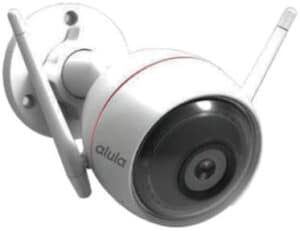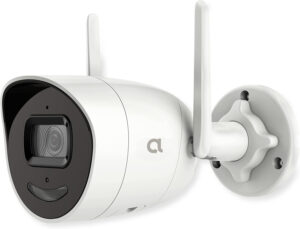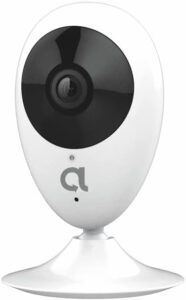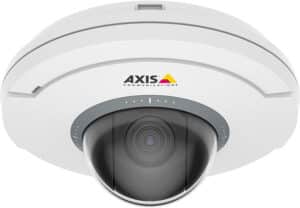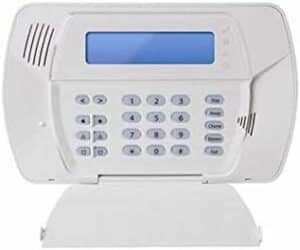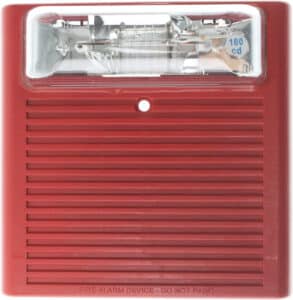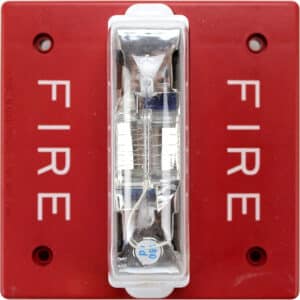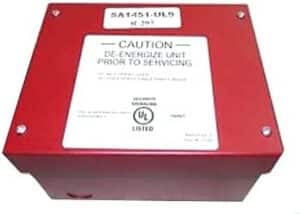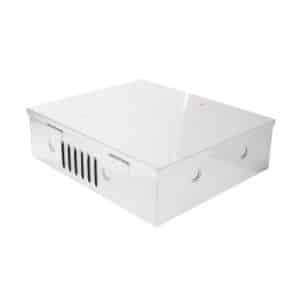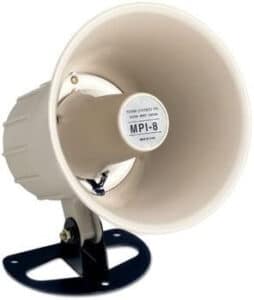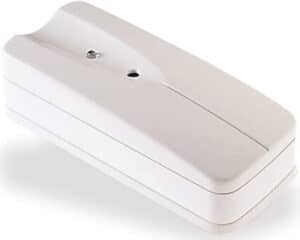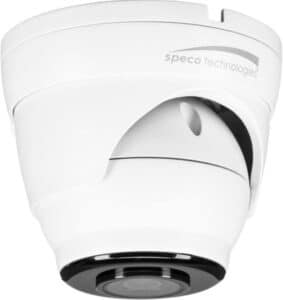Understanding the Different Types of Remote Alarm Systems
As the demand for home security solutions grows, it’s important to understand the different types of remote alarm systems available to ensure your data and property are safely secured. In this article, you will gain a comprehensive understanding of the various remote alarm systems, how they work, and the advantages and disadvantages of each.
Learn about the different features, capabilities, and applications of remote alarm systems to make the best decision for your home security needs. With this powerful knowledge, you can confidently choose the ideal remote alarm system and enjoy the peace of mind that comes with having a secure home.
Table of Contents
Types of Remote Alarm Systems and Their Benefits for Home Security: An Overview
If you want to keep your home safe from intruders, you’ll want to make sure that your home has proper security systems in place. That means having a home alarm system combined with an alarm system monitoring service.
This can be a complete DIY project, or you can hire a security company with professionals to install, set up and monitor your alarm system. There are pros and cons for each option, but the best place to start is to understand the types of security systems and the big benefits they can provide to home security.
Below, we’ve put together an overview of common types of home alarm systems and their benefits for your home security
1. Hardwired Alarm System
A hardwired alarm system is the most traditional type of home security system. It requires the installation of a complex wiring network throughout your home. With this type of system, you can control multiple devices from a single control panel.
2. Wireless Alarm System
A wireless alarm system is an easy and cost-effective way to protect your home. This type of system does not require extensive wiring and makes it easier to install and maintain. Wireless systems are also more portable than traditional systems and can be moved when necessary.
3. Fire Alarm system
A fire alarm system is used to detect smoke and heat in the home, alerting you to the presence of a fire. Fire alarm systems are often required by law in commercial buildings, and can be beneficial in residential settings as well.
4. Smoke Detectors
Smoke detectors are an important part of any home security system. They detect the presence of smoke and alert you to a potential fire. Smoke detectors should be placed in hallways, bedrooms, and other areas of the home.
5. Security Cameras
Security cameras are another important component of home security systems. They can be used to monitor the home, both inside and outside, and can alert you to any suspicious activity. Security cameras can also be used to deter crime and provide evidence in the event of a burglary.
6. Motion Detector Alarms
Motion detector alarms detect movement in a particular area and can alert you to intruders. Motion detectors can also be used to trigger other security measures, such as lighting or sirens.
7. Door Sensor Alarms
Door sensor alarms are designed to detect the opening or closing of a door. They can be used to alert you to intruders, as well as to allow entry to authorized visitors.
8. Window Sensors
Window sensors are designed to detect the opening or closing of a window. They can be used to detect intruders, as well as to allow authorized entry.
9. Intrusion Alarm
An intrusion alarm is a system that detects and alerts you to intruders in your home. Intrusion alarms can sound a siren or contact the police when an intruder is detected.
How to Use Door and Window Sensors to Improve Your Home Security System
Security systems and smart home automation go hand in hand. Door and window sensors, for example, are a great way to monitor your doors and windows continuously. They sense openings or closings and let you know if something unauthorized is happening. Here are a few tips on how to use door and window sensors to improve your home security system:
-
Install Door and Window Sensors in High-Risk Areas. Install door and window sensors in areas that are at higher risk for intrusions, such as ground-floor windows and side doors. This will give you the earliest warning of an intruder attempting to gain entry.
-
Set Up Motion Sensors. Motion sensors are another great way to monitor your home. Place them near doorways, windows, or any other areas that may be vulnerable to an intruder.
-
Connect Sensors to an Alarm System. Connect door and window sensors to an alarm system so that if one of the sensors is triggered, the alarm will sound. This will alert you to potential intrusions and give you the opportunity to take action.
-
Use Smartphone Apps. With many home security systems, you can use a smartphone app to monitor your home. This allows you to receive notifications about any activity that may be happening in your home, such as an intruder.
-
Place Sensors in Unused Rooms. If you have any unused rooms in your home, consider placing sensors in those areas. This can help you to identify any suspicious activity that may be occurring in those areas.
How to Use Door and Window Sensors to Improve Your Home Security System
Security systems and smart home automation go hand in hand. Door and window sensors, for example, are a great way to monitor your doors and windows continuously. They sense openings or closings and let you know if something unauthorized is happening. Here are a few tips on how to use door and window sensors to improve your home security system:
-
Install Door and Window Sensors in High-Risk Areas. Install door and window sensors in areas that are at higher risk for intrusions, such as ground-floor windows and side doors. This will give you the earliest warning of an intruder attempting to gain entry.
-
Set Up Motion Sensors. Motion sensors are another great way to monitor your home. Place them near doorways, windows, or any other areas that may be vulnerable to an intruder.
-
Connect Sensors to an Alarm System. Connect door and window sensors to an alarm system so that if one of the sensors is triggered, the alarm will sound. This will alert you to potential intrusions and give you the opportunity to take action.
-
Use Smartphone Apps. With many home security systems, you can use a smartphone app to monitor your home. This allows you to receive notifications about any activity that may be happening in your home, such as an intruder.
-
Place Sensors in Unused Rooms. If you have any unused rooms in your home, consider placing sensors in those areas. This can help you to identify any suspicious activity that may be occurring in those areas.
DIY Security System vs. Professional Monitoring Service: Which One is Right for You?
Home security systems come in the form of DIY and professionally monitored systems. The former is installed by the homeowner themselves, while the latter is monitored by a professional security company.
Naturally, there are significant costs and time savings associated with DIY installs, but which one should you choose? Well, here’s our pros and cons breakdown.
PROS:
-
Installation: DIY security systems can be installed by pretty much anyone and don’t require a huge team of people to do it.
-
Affordability: DIY systems cost considerably less than professional monitoring services.
-
Control: DIY systems give homeowners complete control over the security system and who has access to it.
-
Reliability: DIY systems tend to have far better reliability because they’re not dependent on a third party to function properly.
-
Variety: DIY systems have more variety than professional ones, making them extremely customizable.
-
Local: Since DIY systems aren’t monitored remotely, you don’t have to worry about your security system being hacked while you’re away.
-
Customization: You can tweak the settings for a professional system, but you may not be able to customize them as much as you like.
-
User-Driven: DIY systems let homeowners make changes and see results immediately. Professional systems are more automated, meaning changes may be processed more slowly.
-
Time: Professionally monitored systems take considerably more time to install than DIY ones.
-
Work: DIY systems require a bit of work upfront, but they aren’t as time-consuming as professionally installed systems.
-
Warranty: Some DIY security systems come with a warranty, which professional systems typically don’t.
-
No Contract: Professional systems require a one-year contract, whereas DIY systems don’t.
Cons:
-
Installation: It can be quite difficult to install DIY security systems correctly, and without the right tools, it can be downright impossible.
-
Level: Professional systems come preprogrammed and installed by experts, ensuring a higher level of home security.
-
Warranty: Professional
The Advantages of Remote Control Options in Alarm Systems
There are many different ways that burglars can break into your home, but one of the most traditional is through the lock. Burglars can access your lock device by using tools that can break it, such as a screwdriver or crowbar. Luckily, there are smart ways to keep your home and your loved ones safe.
An alarm security solution with remote entry notifications gives you an early warning when strangers are approaching your home. Whether there is a nearby intruder or an unwelcome visitor, a remote entry notification can notify you and your family within seconds. When your alarm is armed, when it is disarmed, and whenever you want to be notified of entries, alerts, or system events, you can receive alerts via call, text, or email.
Additional advantages of remote control options in alarm systems include:
-
Increased security: Remote control options can be used to enhance the security of your property by allowing you to remotely arm and disarm your alarm system, as well as check the status of the system. This will help you keep an eye on your home from anywhere in the world.
-
Increased convenience: Remote control options can also be used to enhance the convenience of your home security system. For example, you can use your smartphone to arm and disarm your alarm system, view the status of the system, and even receive notifications about entry or system events.
-
Increased peace of mind: With remote control options, you can rest assured knowing that you can monitor your home from afar and stay informed about the safety of your property and family. This can help you sleep better at night and feel more secure when you are away from home.
Motion Sensors and Glass Break Sensors: The Two Most Important Components of Your Home Alarm System
While we believe that every homeowner should consider installing a home security system with security cameras, two of the most important components of any home security system are motion sensors and glass break sensors.
Motion Sensors
Motion sensors, also referred to as motion sensors, are devices that detect movement in certain areas of your home. When someone moves in a certain area of a room, the motion sensor detects it and notifies the security system, which in turn alerts you.
While motion sensors are one of the most critical home security components of any home security system, they’re also one of the most misunderstood. Many homeowners mistake motion sensors for security cameras, which they’re not. After all, security cameras are specifically installed to record video, where motion sensors detect movement in certain areas of your home.
Glass Break Sensors
Glass break sensors are special types of motion sensors, or more accurately: vibration sensors that detect the sound of breaking glass. When glass breaks, a significant amount of tension is released, which the vibration sensor picks up and notifies the security system, alerting you. If there’s a window in your house that you’d rather keep open for whatever reason, a glass break sensor can be a critical component of your home security system.
Glass Break Sensors Are Not All Created Equal
Glass break sensors aren’t created equal, so it’s critical that you take the time to find one that meets your specific needs. Some sensors are wireless, while others require wiring. Some allow you to add additional sensitivity levels, while others don’t. Small glass break sensors can detect the sound of breaking glass as far as four or five feet away, while larger sensors can detect breaking glass up to 20 feet away.
In Other Words, Some Glass Break Sensors Are Better Than Others
While larger glass break sensors might detect the sound of breaking glass when your window is a mile away, smaller sensors can detect the sound of breaking glass when your window is just a few yards away.
Because glass break sensors are such an important component of your home security system, it’s important to find one that meets your unique needs. If you’re unsure where to start, consider talking to a home security professional like Go Safer Security.
Smart Home Devices That Can Be Connected with Your Remote Alarm System
When it comes to home automation, there’s a lot that can be controlled or automated due to smart technology. One of the most popular ways to control a smart home is smart home devices. With all of these devices, it is possible to control these devices remotely.
Here’s a list of smart home devices that can be connected to your remote alarm system:
-
Smart Lighting
-
Smart Locks
-
Thermostats
-
Smoke And Carbon Monoxide Detectors
-
Water Leak Sensors
-
Door And Window Sensors
These are just a few of the many types of smart home devices that can be connected to your remote alarm system. With the right setup, you can easily control and monitor these devices from anywhere. You can even set up automated rules or routines to make sure your home is secure.
If you’re looking to get the most out of your home security system, consider talking to a home security professional like Go Safer Security to get the best advice and products for your needs.
Why Security Cameras with Local Video Storage are Superior to Cloud-based Options
Recently, we’ve seen an increasing number of cloud security cameras on the market, and these offer the superior conveniences of remote access, stellar video quality, and enhanced security. However, local video storage offers the same advantages with one key benefit: privacy.
Once you upload your video to the cloud storage, you no longer have control over it. If the company holding your video goes out of business, loses your login info, or decides to change the terms of their service agreement, you no longer have access to your video.
If you’re looking to protect and monitor your home without giving up privacy, check out our selection of outdoor security cameras buying guide with secure local storage.
Conclusion
As we have seen, remote alarm systems are a great way to keep your home and family safe from intruders. These systems come in a variety of shapes and sizes to fit any budget and need. Now that you understand the different types of remote alarm systems, why not take the next step and make your home even safer with Xcessory Zone’s DIY home security products?
Our products are designed for easy installation and offer the most up-to-date technology for optimal protection. So don’t wait – take the first step towards safeguarding your home and family today with Xcessory Zone.
FAQs
Can an alarm be triggered remotely?
Yes, an alarm can be triggered remotely with the best home security system that incorporates other smart home devices and connected devices. These devices include motion sensors, door and window sensors, glass break sensors, and smoke detectors, among others. With the help of remote access through the internet, a homeowner can easily control and monitor their alarm system from anywhere in the world.
In cases of emergencies, the alarm can be triggered remotely, notifying the homeowner and triggering the professional monitoring service to dispatch local authorities. This feature is one of the advantages of having a modern and advanced security system that integrates with other smart home devices, giving you peace of mind knowing your home is always secure, even when you’re not there.
Are wireless alarm systems reliable?
Yes, wireless alarm systems are generally reliable as they use advanced technology and smart devices to monitor and secure homes. Third-party devices such as motion sensors, door and window sensors, and glass break sensors can be easily integrated with these alarm systems, making them even more efficient.
Ring Alarm is one such example of a wireless alarm system that offers easy DIY installation, professional monitoring, and integration with other smart home devices. However, it is important to note that false alarms can occur if the system is not set up properly or if there is a malfunction in any of the components. Therefore, it is recommended to opt for professional installation and periodic maintenance for optimal performance.
Overall, wireless alarm systems have proven to be a reliable and effective means of securing homes with their advanced features and remote monitoring capabilities.
Do you need a landline for the monitored alarm?
No, you do not need a landline for a monitored alarm system. Many modern home security systems, such as the Ring Alarm Pro, operate through a cellular network or Wi-Fi, eliminating the need for a landline. However, these systems may require professional installation to ensure proper setup and functionality.
Additionally, alarm triggers, such as door/window sensors and motion detectors, can also be easily installed by homeowners as part of a DIY security system. Overall, whether you opt for a professional installation or a DIY system, ensuring that your home security system includes alarm triggers and a reliable monitoring service is crucial for enhanced protection and peace of mind.
Meet Our Partners!




